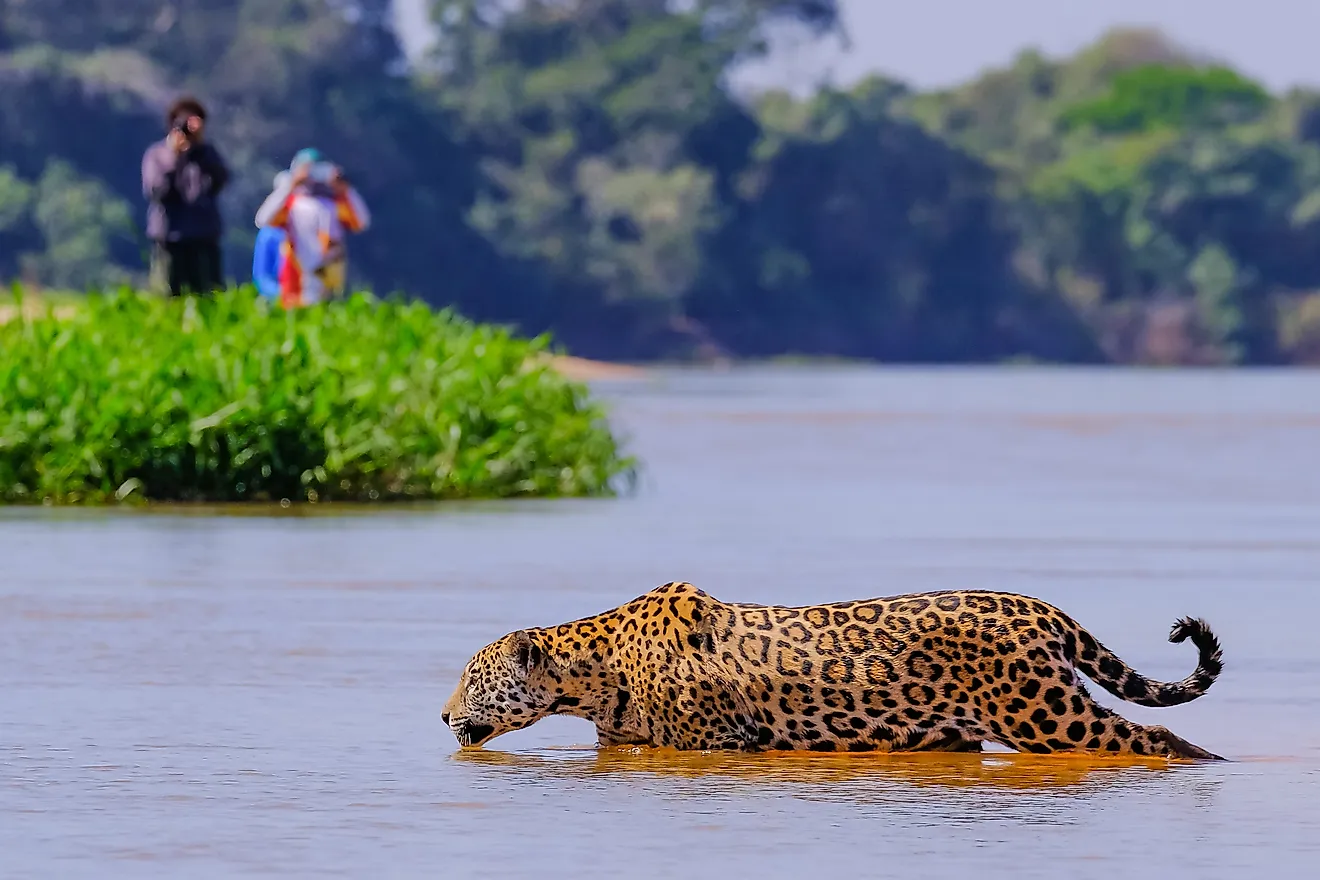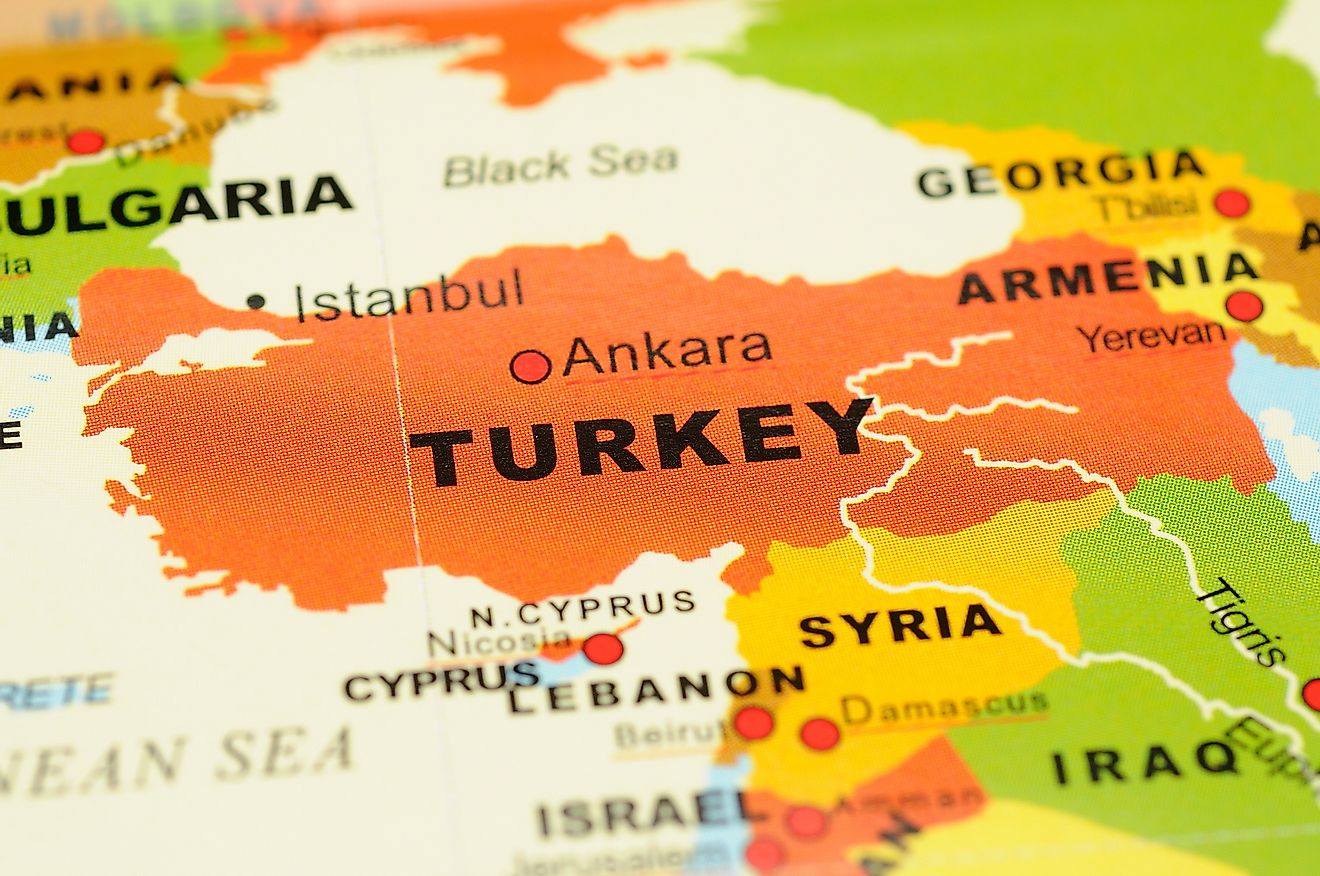The Oceans Of The World By Size
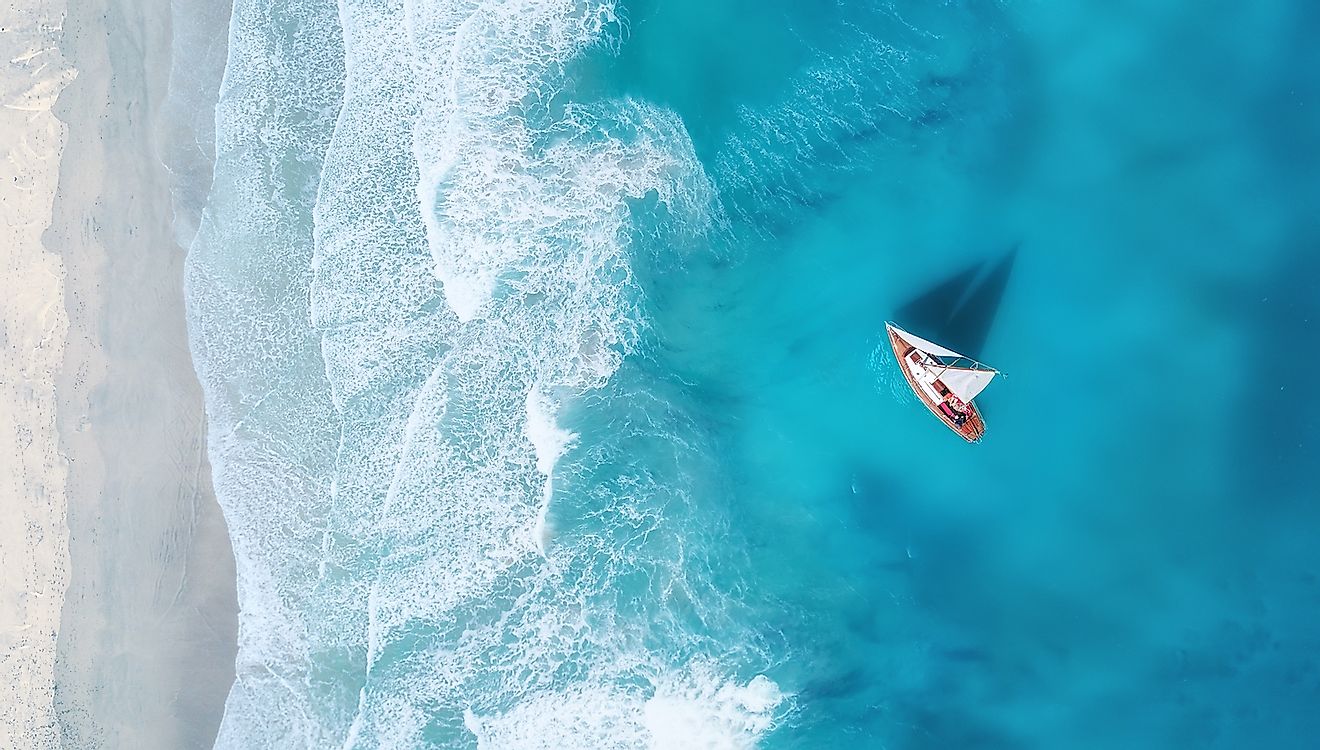
- Making up roughly 46.6 percent of the global ocean, experts consider the Pacific to be the world’s largest ocean.
- Similar to the Pacific, the Atlantic Ocean stretches from the north of the globe to the south, but is significantly narrower in comparison.
- There are some debates regarding the actual size of the Southern Ocean as governments across the world do not unanimously agree on where the other oceans end and the Southern begins.
- Located in the north polar region, the Arctic is the smallest of all five oceans, making up only 4.3 percent of the global ocean.
Experts estimate that 71 percent of the Earth’s surface is completely covered by water with approximately 96.5 percent of this water being ocean. There is technically one global ocean, uninterrupted by land, but we generally refer to it by its five distinct basins: the Pacific, the Atlantic, the Indian, the Southern, and the Arctic. They are aptly named for the region of the world they are located.
The boundaries between these oceans have changed throughout history for various geographical and political reasons, and for all we know, they might change again. In the meantime, the following article compares the five world oceans by size as recognized by maps today.
1. The Pacific Ocean
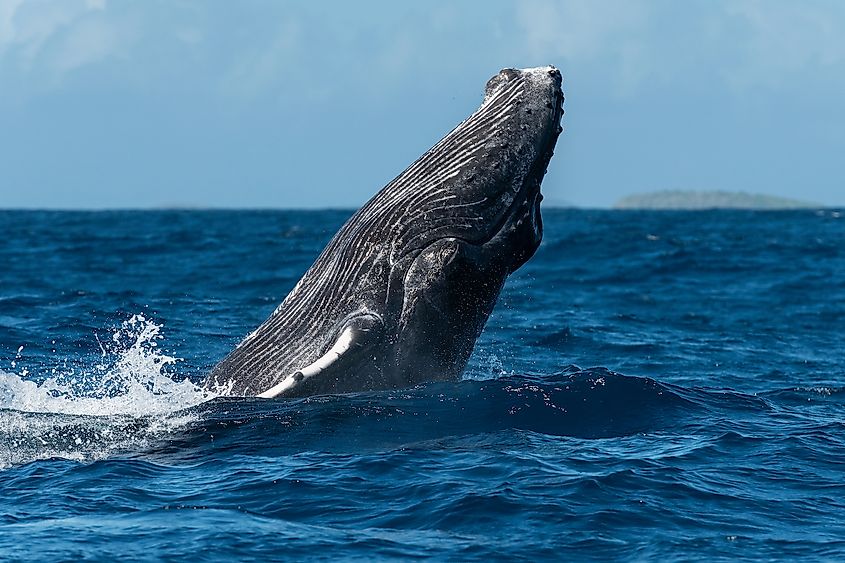
At 168,723,000 square kilometers, the Pacific is the world’s largest ocean. It makes up roughly 46.6 percent of the global ocean, which is just less than half. It extends from the Arctic in the north to the Antarctic in the south, and is largely located between Asia and the Americas, covering 135,663 kilometers of coastline. Some of the more notable countries it borders is Russia, China, Canada, the United States, Mexico, Peru, and Chile. It is home to approximately 25,000 islands, many of which belong to Asia, but it also borders the island continent of Australia.
The Pacific’s average depth is 3,970 meters, the most of any ocean, but it is also the place where the Mariana Trench is located. Measuring 11,034 meters, it is the deepest place on Earth. In fact, Mount Everest would be completely submerged if placed at the very bottom. Given this fact, it should come as no surprise to learn that the Pacific boasts 50.1 percent of the total global ocean volume. Because of its enormous size, the Pacific is home to a colorful collection of sea creatures, from killer whales to dugongs, and giant squids to tiny sea slugs.
This vast ocean has been the backdrop to some incredible moments throughout history, but recently, it is most known for being a principal theater of war during World War II, witnessing such iconic events like the Battles of Midway and Iwo Jima.
2. The Atlantic Ocean
The Atlantic measures approximately 85,133,000 square kilometers. Even though it is the second largest ocean in the world, the Pacific is roughly twice as big. Despite this difference, it runs along 111,866 kilometers of coastline. On the west, it borders the Americas, including countries like Brazil and Argentina. On the east, it borders Europe and numerous African countries. Similar to the Pacific, it stretches from the north of the globe to the south, but is significantly narrower in comparison. It is recognizable on a world map by its distinct S-shape.
It has an average depth of 3,646 meters; however the Milwaukee Deep—its deepest point—measures 8,380 meters. It was only recently when Victor Vescovo, a former naval officer, made the first descent to the cold depths of this particular section of the Puerto Rico Trench.
The ocean’s name derives from Greek mythology, specifically Atlas, the Titan who was responsible for holding the weight of the heavens on his shoulders. This is perhaps an appropriate moniker as the Atlantic witnessed many horrific events throughout history, such as the sinking of the Titanic in 1912 and the attack on the RMS Lusitania in 1915.
3. The Indian Ocean

At 70,560,000 square kilometers, the Indian Ocean comes in at third. It makes up approximately 19.5 percent of the global ocean and has 66,526 kilometers of coastline. Unlike the previous two oceans, it does not run north to south, but rather is landlocked from the north, contained in a pocket made up of East Africa, parts of Asia, and western Australia. It is home to many islands, including Madagascar, the fourth largest island in the world.
Despite its smaller size, the Indian Ocean has an average depth roughly 100 meters deeper than the Atlantic. It contains the fewest trenches of any of the other oceans, but it is where the world’s second-longest trench—the Java Trench—is located. It is there where the Indian reaches its deepest point of 7,450 meters.
In earlier times, it was known as the Eastern Ocean before it was dubbed the Indian around the beginning of the 1500s. Since then, some local governments, including Pakistan, contested its name because of the implication that India was the most important country in the southern half of the continent. Regardless of any efforts to change its title, it remains the Indian Ocean.
4. The Southern Ocean
The Southern Ocean measures approximately 21,960,000 square kilometers. Making up 6.1 percent of the global ocean, it is significantly smaller than the three oceans above. In fact, the Pacific is roughly seven times bigger. It should be noted, however, that there is some debate as to where the other oceans end and the Southern begins. The United States recognizes the latter as the body of water extending up to the 60th parallel south, a circle of latitude well below the equator. Regardless, it is aptly named for its position at the bottom of the globe where it completely surrounds Antarctica.
Even though it is drastically smaller, it has an average depth of 3,270 meters, which is only 700 meters less deep than the Pacific. Despite the barren landscape, it is home to a diverse collection of wildlife, including whales, seals, and penguins. Unfortunately, many of these animals are currently at risk because of pollution and the ever-increasing threat of climate change.
Throughout history, only the other four oceans were recognized. The Southern was first proposed to the International Hydrographic Organization in 2000. It has yet to be accepted by all members, so its inclusion is not yet official, but many countries, including the United States, acknowledge its legitimacy.
5. The Arctic Ocean
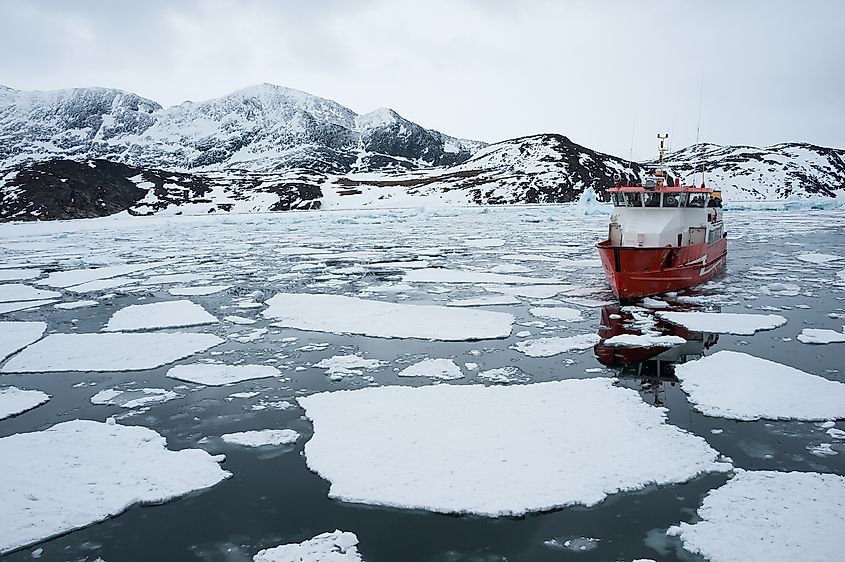
The Arctic is the smallest of all five oceans. Stretching 15,558,000 square kilometers, it makes up only 4.3 percent of the global ocean. It does, however, have 27,421 more kilometers of coastline than the Southern. Located in the north polar region, it borders six countries: the United States, Canada, Greenland, Iceland, Norway, and Russia. It is home to several notable islands, including the Queen Elizabeth Islands, the Russian Arctic Islands, and the aforementioned island country of Iceland which straddles the Arctic and Atlantic.
The Arctic Ocean is even less deep than all the others, its average depth coming in at just 1,205 meters. It is generally recognized as the coldest of the five; however, it is warming two to three times faster than the rest of the world due to climate change.
Its name comes from the Greek word Arktos which means “bear.” This inspiration has less to do with the native polar bears and more to do with the constellations Ursa Minor and Ursa Major—Little Bear and Great Bear. Several oceanographers prefer to refer to it as the Arctic Sea, but the International Hydrographic Organization does recognize it as an official ocean.
https://www.worldatlas.com/articles/the-oceans-of-the-world-by-size.html
| Rank | Ocean | Area (km2) | Volume (km3) | Avg. depth (m) | Coastline (km) |
|---|---|---|---|---|---|
| 1 | Pacific Ocean | 168,723,000 (46.6) | 669,880,000 (50.1) | 3,970 | 1,35,663 |
| 2 | Atlantic Ocean | 85,133,000 (23.5) | 310,410,900 (23.3) | 3,646 | 1,11,866 |
| 3 | Indian Ocean | 70,560,000 (19.5) | 264,000,000 (19.8) | 3,741 | 66,526 |
| 4 | Southern Ocean | 21,960,000 (6.1) | 71,800,000 (5.4) | 3,270 | 17,968 |
| 5 | Arctic Ocean | 15,558,000 (4.3) | 18,750,000 (1.4) | 1,205 | 45,389 |
